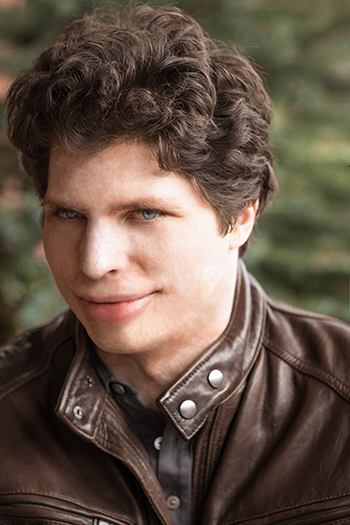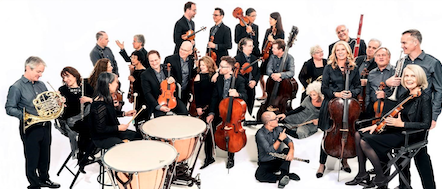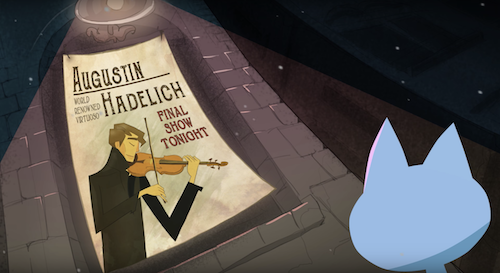by Mike Telin

Presented by Tuesday Musical, the program will include Irving Fine’s Serious Song (lament for string orchestra), Schubert’s Rondo in A for violin and strings, Haydn’s Violin Concerto in C, and Tchaikovsky’s Serenade for Strings. A pre-concert talk by Akron Symphony bassoonist Coltan Foster begins at 6:30 pm. Tickets are available online.
“The Haydn Concerto has been one of my favorite classical pieces to play for a long time — I’m in love with it,” the 33-year-old said by telephone from Vancouver, where he was performing Bernstein’s Serenade with Bramwell Tovey and the Vancouver Symphony. “I think the Haydn is neglected — people pass it over for the Mozart concertos. But it’s witty and musically interesting. It has a slow movement that is incredibly beautiful.”
The violinist said that unlike the Mozart concertos, the Haydn has a Baroque feel. “Although we aren’t using one for this concert, it’s often performed with harpsichord. But the instrumentation wasn’t so strict in those days — it all depended on what was available. It’s a wonderful piece and in the last few seasons I have played it once or twice somewhere. It’s usually combined with another work like the Adès concerto.”
For the Akron performance, the Grammy winner will combine it with Schubert’s Rondo in A. “When I was brainstorming with Orpheus about works for violin and strings I thought of this. I played it a lot growing up. It’s really charming and I’ve always had a soft spot for it.” Hadelich said that while Schubert wrote a number of pieces for violin and strings, this is the only one that is ever played. However, looking at the score, it is difficult to say whether it was intended to be played with a large orchestra or quartet.
“He wrote the piece for his brother and stylistically I think it sounds a lot like Mozart. When I was growing up you couldn’t find a good recording of it, but now it occasionally gets put on anthologies. It has Schubert’s ease of writing. You can tell that he sat down and ideas started pouring out of his head. He could always write beautiful music out of nowhere. He never wrote a development — maybe he thought they were boring — so whenever you expect to find one he just brings in another melody, and since it’s Schubert, I’ll take it.”
The violinist looks forward to reuniting with the conductor-less Orpheus Chamber Orchestra, especially with the Haydn and Schubert, both of which were written at a time when the concertmaster led the orchestra.

Hadelich enjoys writing his own cadenzas for his concerto performances, many of which are available to download as a PDF on his website. He pointed out that in Haydn’s time, violinists often improvised their cadenzas, but for some reason that tradition stopped. He began writing his own for concertos by Haydn and Mozart because he was not satisfied with the ones that were available.
“Most of them were extremely romantic — for example the Joachim cadenzas sound like Brahms. Of course, any that I write will also be in a different style, but they are more personal. When I’m writing a cadenza I learn so much about the piece and I find that the next time I play the concerto I play it a little bit differently — not only have I played that material, I have also composed with it, so I become more aware of the composer’s process. It’s always very interesting and I have a good time with it.”
Hadelich does not stop with classical concertos: his writing of cadenzas extends to Brahms and Paganini. “The Brahms doesn’t have an original cadenza so I wrote one about a year ago, but that was my most ambitious project. Around that time composers started to supply their own cadenzas. Perhaps they didn’t trust violinists, having heard things that were in bad taste — ‘I’d better write my own because who knows what people will do.’ I also keep changing mine so every couple of years I’ll replace the PDF. What seemed like a great idea ten years ago begins to sound a little silly to me — but I haven’t changed the Haydn in a while.”
For Hadelich’s latest recording, Nicolò Paganini: 24 Caprices for solo violin on Warner Classics, he created an animated video for #17 to coincide with the album’s release. Click here to view Fantasia dei Gatti.

It’s been fun to see the reactions. Hadelich said that people have immediately asked when he’s going to do the next one. “People watch so many cartoons and animated movies, but they don’t realize how difficult it is to make them — especially if the animation is made by one person instead of in a studio with hundreds or thousands of people.”
The violinist said he was lucky to work with people like Paul Glickman. “He had flashes of genius where he came up with the funniest little gags. His ideas were pretty wild. And Tam King’s drawings have so much character and wit. When I started I had no idea what it would be like because I had never done anything with animation, but it was a lot of fun.”
Published on ClevelandClassical.com March 20, 2018.
Click here for a printable copy of this article



